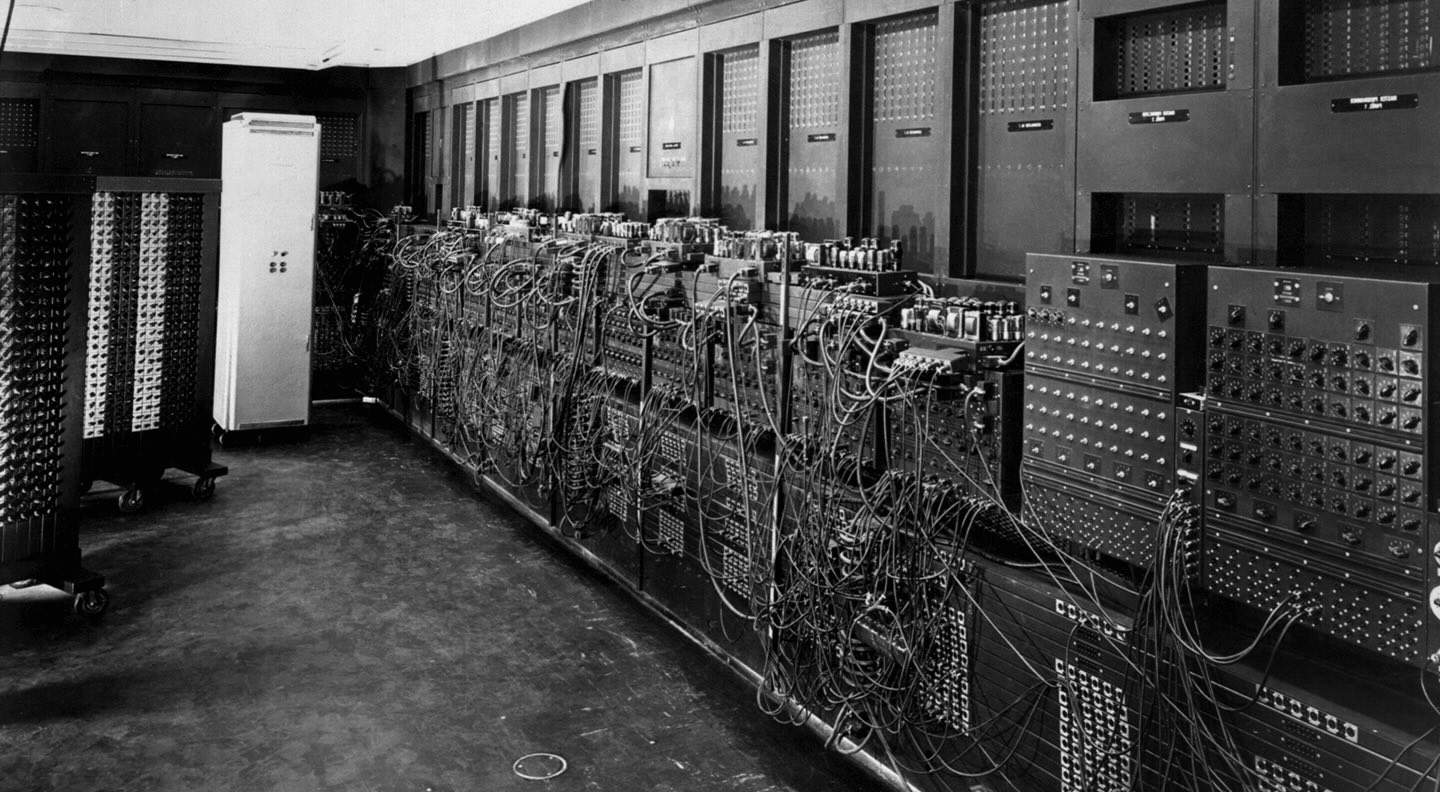
Ever wondered about the first computer? It wasn't a sleek laptop or a powerful desktop. The ENIAC, short for Electronic Numerical Integrator and Computer, was the world's first general-purpose computer. Built in the 1940s, this massive machine filled an entire room and weighed over 30 tons! Imagine needing a whole room just for one computer. It could perform thousands of calculations per second, a groundbreaking feat at the time. The ENIAC revolutionized computing, paving the way for the technology we use today. Ready to dive into more mind-blowing facts about this pioneering invention? Let's get started!
Key Takeaways:
- The first computer, ENIAC, was a massive machine that could perform complex calculations much faster than any human, paving the way for modern computing technology.
- ENIAC's legacy extends beyond its initial purpose, inspiring future developments in computing and technology, and introducing key concepts still relevant in modern computing.
The Birth of the First Computer
The first computer marked a significant milestone in technology. It laid the foundation for the digital age we live in today. Here are some fascinating facts about this groundbreaking invention.
- The first computer, called the ENIAC, was developed in the 1940s.
- ENIAC stands for Electronic Numerical Integrator and Computer.
- It was designed by John Mauchly and J. Presper Eckert.
- The project was funded by the U.S. Army during World War II.
- ENIAC was primarily used to calculate artillery firing tables.
Size and Structure of ENIAC
ENIAC was not just a computer; it was a massive machine that occupied an entire room. Its size and structure were unlike anything we see today.
- ENIAC weighed about 30 tons.
- It covered an area of 1,800 square feet.
- The machine consisted of 17,468 vacuum tubes.
- It also had 7,200 crystal diodes.
- ENIAC used 1,500 relays and 70,000 resistors.
Functionality and Performance
Despite its enormous size, ENIAC was incredibly powerful for its time. It could perform complex calculations much faster than any human.
- ENIAC could perform 5,000 additions per second.
- It could also handle 357 multiplications per second.
- The machine was capable of 38 divisions per second.
- ENIAC could solve a problem in seconds that would take a human weeks.
- It was used to calculate the trajectory of missiles and shells.
Programming ENIAC
Programming ENIAC was a complex task that required a deep understanding of its hardware. It was not as simple as writing code on a modern computer.
- ENIAC was programmed using plugboards and switches.
- The programming process could take days or even weeks.
- Six women, known as the ENIAC programmers, were the first to program the machine.
- These women were Kay McNulty, Betty Jennings, Betty Snyder, Marlyn Wescoff, Ruth Lichterman, and Frances Bilas.
- They played a crucial role in the success of ENIAC.
Legacy and Impact
ENIAC's legacy extends far beyond its initial purpose. It paved the way for future developments in computing and technology.
- ENIAC was decommissioned in 1955.
- Parts of ENIAC are displayed in various museums, including the Smithsonian Institution.
- The machine inspired the development of the UNIVAC, the first commercial computer.
- ENIAC's success demonstrated the potential of electronic computing.
- It influenced the design of subsequent computers, including the IBM 701.
Fun Facts About ENIAC
Beyond its technical specifications, ENIAC had some interesting quirks and stories associated with it.
- ENIAC consumed about 150 kilowatts of power.
- The machine generated so much heat that it required a dedicated cooling system.
- ENIAC's first task was to calculate the feasibility of the hydrogen bomb.
- The machine was often referred to as a "giant brain" by the media.
- ENIAC could be reprogrammed to solve different problems, making it versatile for its time.
ENIAC's Influence on Modern Computing
ENIAC's design and functionality have had a lasting impact on modern computing. Many principles used in ENIAC are still relevant today.
- ENIAC introduced the concept of stored-program architecture.
- It demonstrated the importance of binary arithmetic in computing.
- The machine's modular design influenced the development of modern processors.
- ENIAC's success highlighted the need for reliable electronic components.
- The principles behind ENIAC continue to inspire innovations in computing technology.
The Legacy of the First Computer
The first computer, ENIAC, changed everything. It wasn't just a machine; it was a game-changer. Built in the 1940s, this massive device took up an entire room and weighed over 30 tons. Despite its size, ENIAC could perform calculations thousands of times faster than any human. This innovation paved the way for the modern computers we use today.
ENIAC's creation marked the beginning of the digital age. It showed the world what was possible with technology. From its vacuum tubes to its punch cards, every part of ENIAC was a step toward the future. Today, we carry more computing power in our pockets than ENIAC ever had, but we owe it all to that first giant leap.
Understanding ENIAC's history helps us appreciate how far we've come and inspires us to keep pushing the boundaries of what's possible.
Frequently Asked Questions
Was this page helpful?
Our commitment to delivering trustworthy and engaging content is at the heart of what we do. Each fact on our site is contributed by real users like you, bringing a wealth of diverse insights and information. To ensure the highest standards of accuracy and reliability, our dedicated editors meticulously review each submission. This process guarantees that the facts we share are not only fascinating but also credible. Trust in our commitment to quality and authenticity as you explore and learn with us.
